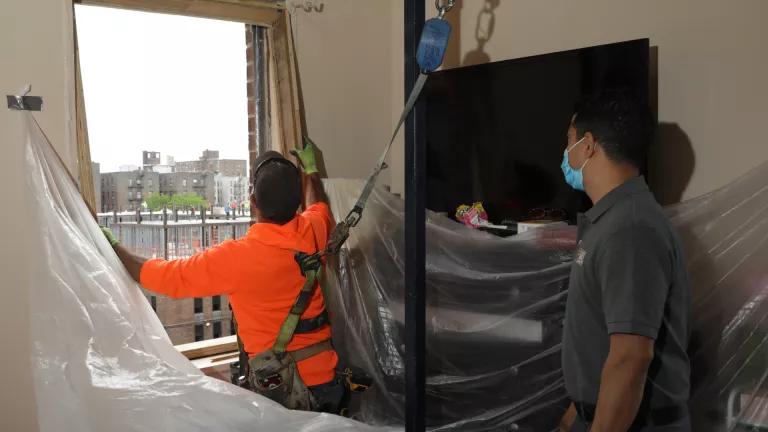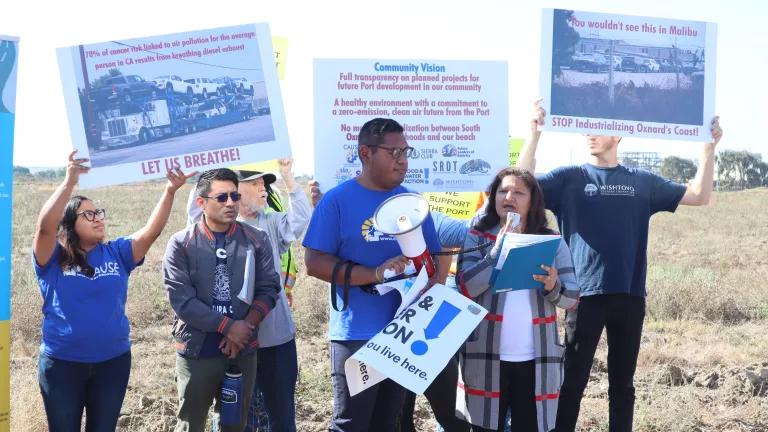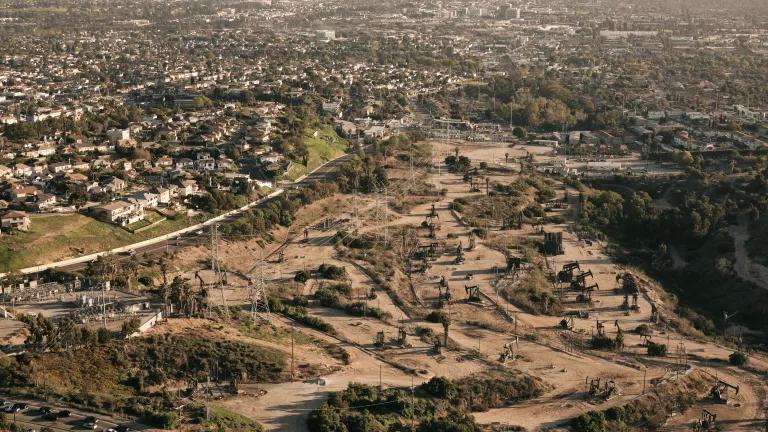The Port of Long Beach recently moved forward with two important programs to help reduce the harmful air pollution of its operations. While there is still a long way to go to clean up the port’s pollution, these two programs are great steps in the right direction.
On-Dock Rail
The Port of Long Beach is the second busiest port in the country, handling approximately 16,000 containers of cargo every day. Once the cargo containers are taken off the ship, they need to get to either a warehouse, distribution center, or directly to market. Much of the cargo makes this journey by a combination of trucks and trains. There are several railyards in the Los Angeles region where the cargo is transferred from a truck to a train. These railyards are notorious polluters, dramatically increasing the cancer risk for nearby residents. Community advocates and environmental groups have long called for railyards to be located directly on the port’s dock, instead of close to schools and residential neighborhoods. If railyards were located on-dock, then the cargo from the ships could be loaded directly on to a train, without having to first be hauled from the port to the railyard by a truck, bringing the truck’s dirty air emissions through neighborhoods. This would reduce the pollution from trucks going through LA’s neighborhoods, move the cargo faster, and keep the railyard’s pollution farther away from residents.
Some good news is the Port of Long Beach recently announced a $36.8 million construction contract to increase the port’s capacity for on-dock rail. The project is called the “Green Port Gateway.” Construction is expected to begin next month and will continue until July 2014. This kind of project is exactly what community advocates and environmental groups have been calling for: putting railyards on-dock rather than in neighborhoods.
This project is a stark contrast with a different railyard project—the proposed Southern California International Gateway, or “SCIG.” The Port of Los Angeles and BNSF Railway are proposing to build a huge new railyard a few miles from the port. This new railyard would be located close to several schools and residential neighborhoods, and would increase toxic air pollution for nearby communities that already face high levels of air pollution. The Port of Los Angeles is accepting comments from the public about this proposed railyard until November 9.
A third proposed railyard project is also coming down the pipeline within the year: expansion of an existing railyard a few miles from the ports and directly adjacent to where the SCIG would be located, called the Intermodal Container Transfer Facility (“ICTF”). The proposal is to expand this existing railyard. We hope at a minimum that the proposal includes the utilization of zero emissions technology so that the project would actually reduce the railyard’s air pollution rather than increase it.
Zero Emissions Technology
Almost all of the air pollution from the transportation of cargo comes from the tailpipe emissions of the vehicles that do the transportation: ships, trucks, trains, cargo handling equipment. While newer models of all of these vehicles and equipment emit less harmful pollution than the older models, we are still nowhere near where we need to be to have clean air. To really clean up this industry, a lot of the vehicles and equipment will need to emit zero air pollution. Like on-dock rail, community advocates and environmental groups have also long asked the region’s two ports to invest in the advancement and deployment of zero emissions technology.
Over the past few years, the ports of Long Beach and Los Angeles and our region’s air quality agencies have been moving forward to develop policies and programs to advance these life-saving technologies. Earlier this month, the Port of Long Beach adopted guidelines for a new grant program, through which the port would award funding for the demonstration and deployment of zero emissions technology. It is still unclear exactly how much money will be awarded through the program, but this is a good step in the right direction.



